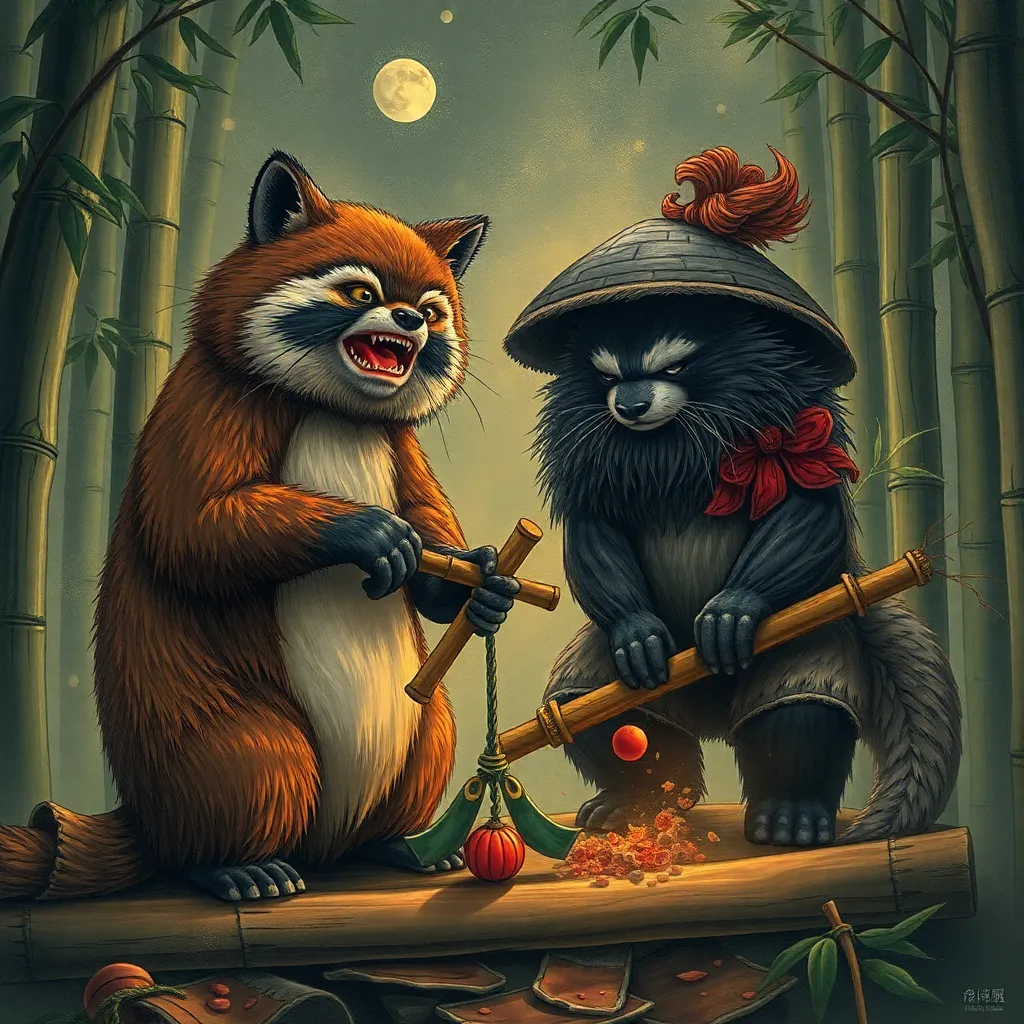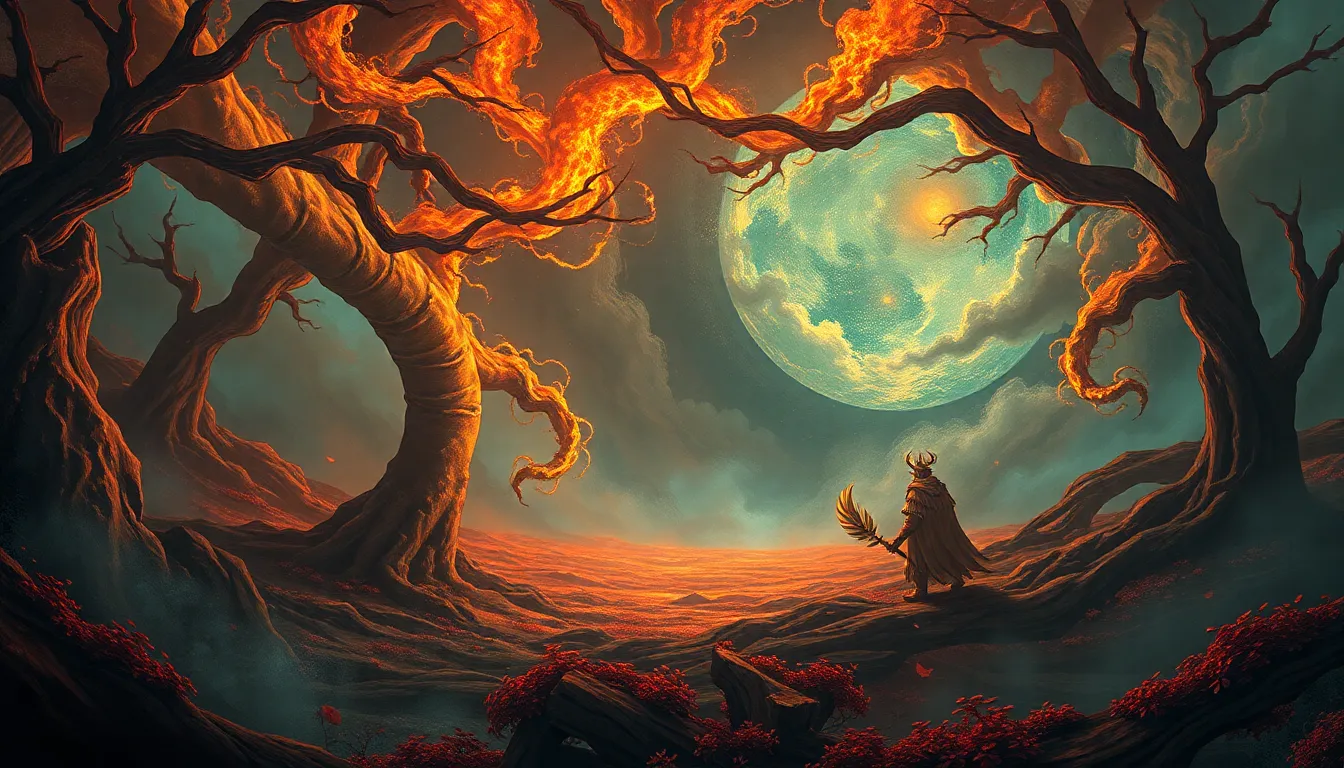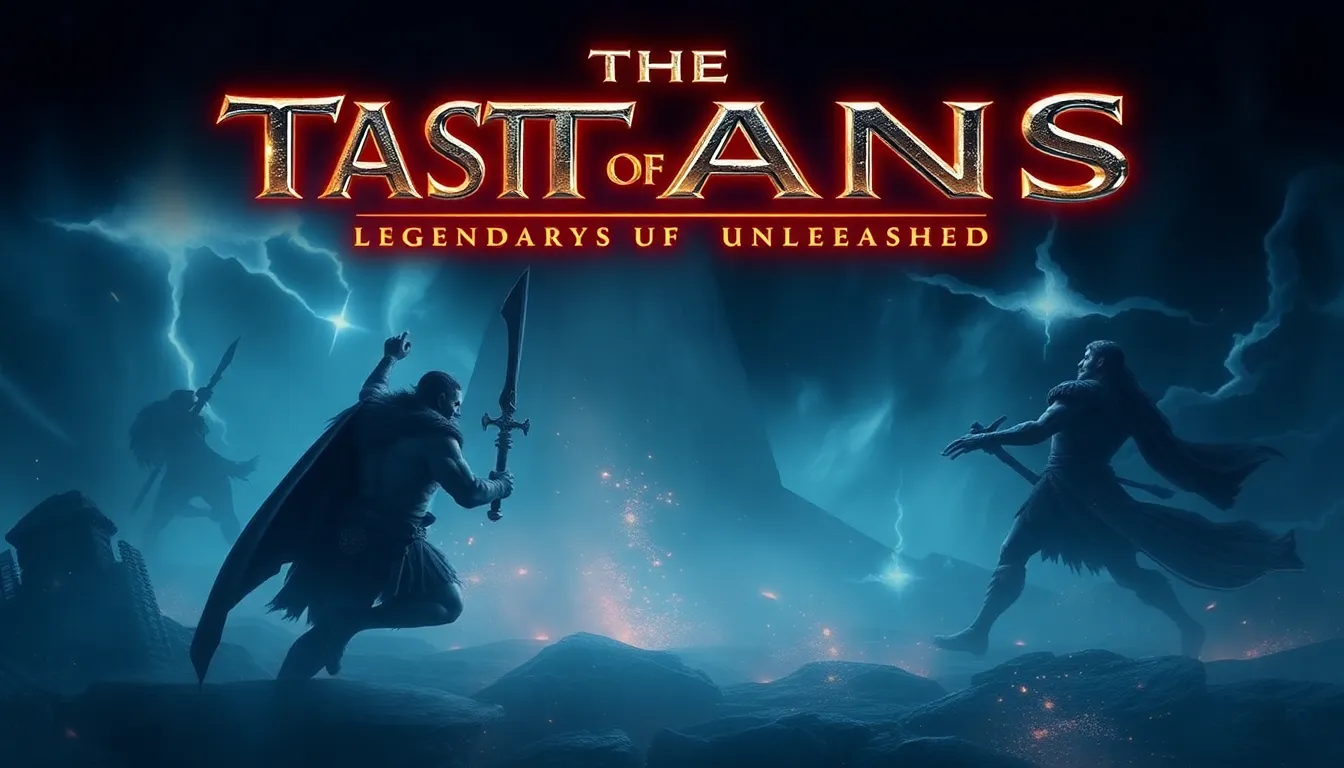Tanuki and the Bamboo Cutter: Exploring the Link Between Japanese Myths
I. Introduction
Japanese mythology is a rich tapestry of stories that reflect the values, beliefs, and cultural heritage of Japan. It encompasses a wide range of supernatural beings and legendary heroes, each with unique characteristics and moral lessons. Among these captivating tales are the stories of the Tanuki, a shape-shifting trickster, and the Bamboo Cutter, the protagonist of the famous folktale “The Tale of the Bamboo Cutter” (Kaguya-hime).
This article aims to explore the connections between the Tanuki and the Bamboo Cutter, examining their individual characteristics, shared themes, and cultural significance within the broader context of Japanese folklore.
II. Understanding Tanuki: The Shape-Shifting Trickster
Tanuki, often translated as “raccoon dog,” is a creature from Japanese folklore known for its shape-shifting abilities and mischievous nature. Originating from ancient Japan, the Tanuki has evolved into a symbol of trickery and transformation.
A. Origin and characteristics of Tanuki in Japanese folklore
Tanuki are depicted as playful creatures that can transform into various objects and beings. They possess unique features, such as a round body, distinctive facial markings, and a large belly, which often symbolizes good fortune. In folklore, they are known to deceive humans, leading to humorous and sometimes instructive outcomes.
B. Cultural significance and symbolism of Tanuki
In Japanese culture, Tanuki represent adaptability, creativity, and the duality of nature. They are often associated with prosperity and the harvest, making them popular figures in Shinto shrines and festivals. Their playful nature serves as a reminder of the importance of humility and the unpredictability of life.
C. Common stories and representations in popular culture
Tanuki appear in numerous stories, cartoons, and films, including Studio Ghibli’s “Pom Poko,” where they fight to protect their forest home against urban development. These portrayals reflect their cultural significance and enduring popularity in modern Japanese society.
III. The Bamboo Cutter: A Tale of Transformation and Redemption
The “Tale of the Bamboo Cutter,” one of Japan’s oldest and most beloved folktales, tells the story of Kaguya-hime, a mysterious girl found inside a bamboo stalk. This tale encompasses themes of beauty, love, and the quest for belonging.
A. Summary of “The Tale of the Bamboo Cutter” (Kaguya-hime)
The story begins with an old bamboo cutter who discovers a tiny, radiant girl inside a bamboo stalk. He and his wife raise her, naming her Kaguya-hime. As she grows, her extraordinary beauty attracts suitors from far and wide. However, Kaguya-hime sets impossible tasks for them, ultimately revealing her celestial origins. In the end, she returns to the Moon, leaving her earthly parents heartbroken.
B. Themes of beauty, love, and longing in the story
The tale emphasizes the ephemeral nature of beauty and the longing for connection. Kaguya-hime’s journey reflects the complexities of love, desire, and the sacrifices that come with it. Her departure serves as a poignant reminder of the transience of life and love.
C. Cultural and historical context of the Bamboo Cutter tale
This folktale, believed to date back to the 10th century, highlights the influence of Buddhism and Shintoism in Japanese culture. It encapsulates the ideals of impermanence and the pursuit of enlightenment, making it a foundational story in Japanese literature.
IV. Similarities Between Tanuki and the Bamboo Cutter
While Tanuki and the Bamboo Cutter represent different aspects of Japanese mythology, they share several similarities that reflect common themes in folklore.
A. Transformation and shape-shifting in both narratives
Both Tanuki and Kaguya-hime embody the theme of transformation. Tanuki can change form at will, while Kaguya-hime’s life transitions from a celestial being to a mortal, and back again. This fluidity symbolizes the complexities of identity and existence.
B. The role of nature and the supernatural
Nature plays a critical role in both narratives. Tanuki are deeply connected to the natural world, often embodying the spirit of the forest. Kaguya-hime’s origin from bamboo highlights the supernatural elements that intertwine with the natural environment in Japanese folklore.
C. The underlying moral lessons present in both myths
Both myths convey important moral lessons: Tanuki teach the value of wit and humility, while Kaguya-hime’s story imparts lessons about love, loss, and the acceptance of impermanence. These lessons resonate deeply within Japanese culture.
V. Unique Attributes: Differentiating the Two Myths
Despite their similarities, Tanuki and the Bamboo Cutter possess distinct characteristics that set them apart.
A. Distinct character traits and motivations of Tanuki and Kaguya-hime
Tanuki are characterized by their playful, trickster nature, often motivated by mischief or the desire to protect their territory. In contrast, Kaguya-hime is portrayed as a serene and ethereal being, driven by her longing for home and the inevitability of her fate.
B. Different cultural representations and interpretations
Tanuki are often celebrated in festivals and as symbols of good fortune, whereas Kaguya-hime’s story is frequently adapted into literature, theater, and film, emphasizing themes of beauty and sadness. These differences reflect varying cultural interpretations and societal values.
C. The impact of societal values on the stories
The representation of Tanuki and Kaguya-hime reflects societal values of humor, resilience, and the appreciation of nature in the case of Tanuki, while Kaguya-hime’s narrative underscores the importance of beauty, love, and the bittersweet nature of existence.
VI. Influence on Modern Japanese Culture
Both Tanuki and Kaguya-hime continue to influence modern Japanese culture, appearing in various forms of art, literature, and media.
A. Tanuki and the Bamboo Cutter in contemporary media
In contemporary Japan, Tanuki are featured in various media, from anime and manga to video games, often embodying their traditional traits of trickery and playfulness. Similarly, Kaguya-hime has been adapted into films, including Studio Ghibli’s “The Tale of the Princess Kaguya,” which presents her story with stunning animation and emotional depth.
B. Their roles in art, literature, and film
Both figures have inspired artists, writers, and filmmakers, allowing their stories to evolve while retaining their core themes. Tanuki often appear in traditional paintings and sculptures, while Kaguya-hime is a popular subject in literature and theatrical performances, showcasing her beauty and tragic fate.
C. Continuing relevance of these myths in modern Japan
The myths of Tanuki and the Bamboo Cutter remain relevant in modern Japan, as they resonate with contemporary themes of transformation, identity, and the relationship between humanity and nature. They serve as cultural touchstones that help younger generations connect with their heritage.
VII. Conclusion
In conclusion, the exploration of Tanuki and the Bamboo Cutter reveals both connections and differences that enrich our understanding of Japanese mythology. Both narratives convey significant moral lessons and reflect the cultural values of Japan, emphasizing themes of transformation, nature, and the complexities of existence.
These myths not only provide insight into Japanese culture but also invite further exploration of the rich tapestry of folklore that continues to shape the identity of Japan today.
VIII. References and Further Reading
A. Suggested books and articles on Japanese mythology
- “Japanese Mythology: A to Z” by Jeremy Roberts
- “The Tale of the Bamboo Cutter: A Retelling” by Susan M. Wilcox
- “The Magic of Reality: How We Know What’s Really True” by Richard Dawkins
B. Links to folklore databases and cultural studies



